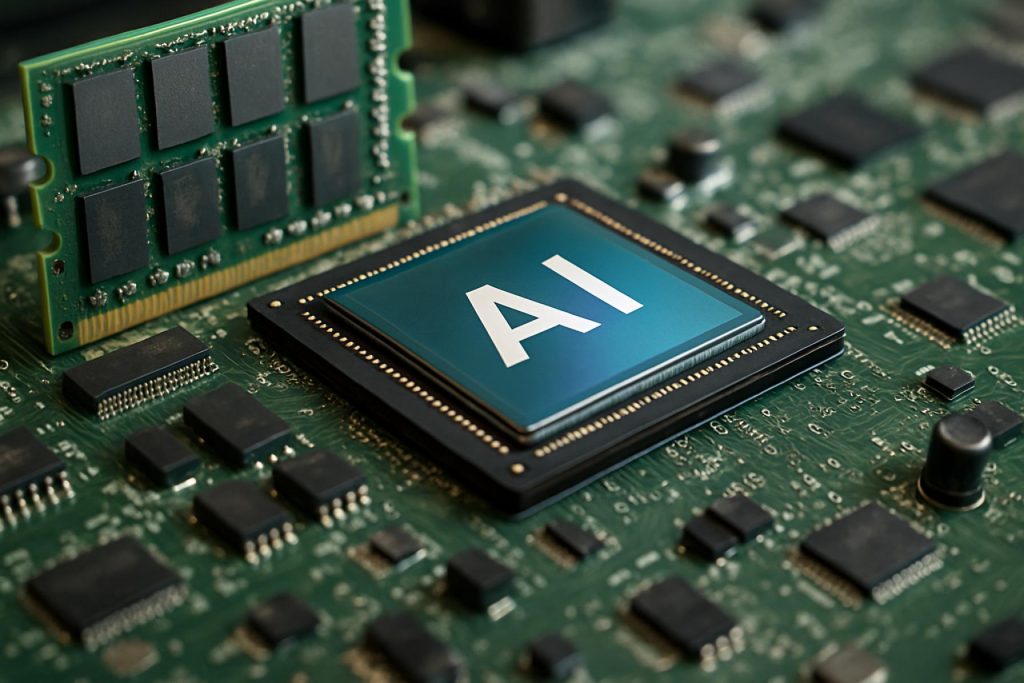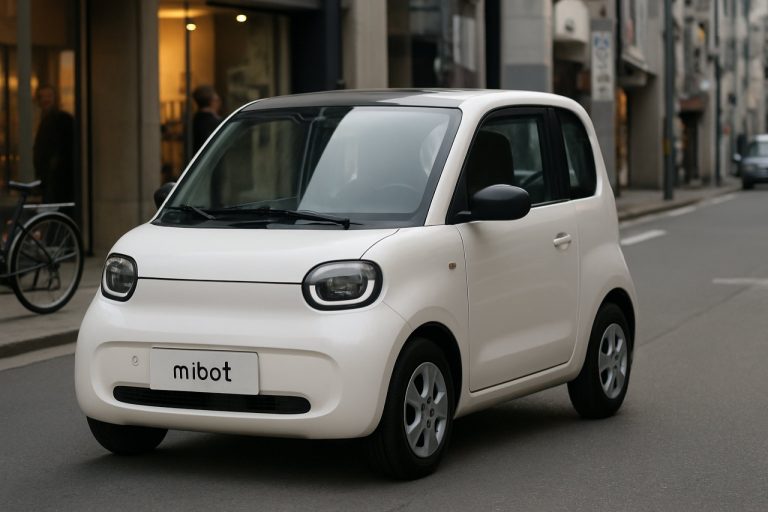
2025 Embedded Memory Systems for AI Accelerators: Market Dynamics, Technology Innovations, and Strategic Forecasts. Explore Key Growth Drivers, Regional Trends, and Competitive Insights Shaping the Next 5 Years.
- Executive Summary & Market Overview
- Key Technology Trends in Embedded Memory for AI Accelerators
- Competitive Landscape and Leading Players
- Market Growth Forecasts (2025–2030): CAGR, Revenue, and Volume Analysis
- Regional Market Analysis: North America, Europe, Asia-Pacific, and Rest of World
- Challenges, Risks, and Emerging Opportunities
- Future Outlook: Strategic Recommendations and Investment Insights
- Sources & References
Executive Summary & Market Overview
Embedded memory systems are integral components within AI accelerators, providing the high-speed, low-latency data storage and retrieval necessary for efficient machine learning and inference workloads. As AI models grow in complexity and size, the demand for advanced embedded memory solutions—such as SRAM, MRAM, and emerging non-volatile memories—has surged, driving innovation and investment across the semiconductor industry.
The global market for embedded memory systems in AI accelerators is projected to experience robust growth through 2025, fueled by the proliferation of edge AI devices, data center expansion, and the increasing adoption of AI in automotive, industrial, and consumer electronics sectors. According to Gartner, the AI semiconductor market, which includes embedded memory, is expected to surpass $70 billion by 2025, with memory technologies accounting for a significant share of this value due to their critical role in performance and energy efficiency.
Key trends shaping the market include the integration of high-bandwidth memory (HBM) and 3D-stacked memory architectures, which address the bandwidth bottlenecks faced by traditional DRAM and SRAM solutions. Companies such as Samsung Electronics and Micron Technology are leading the commercialization of HBM and GDDR6 memory for AI accelerators, while startups and established players alike are investing in next-generation non-volatile memories like MRAM and ReRAM to further reduce power consumption and improve endurance.
The competitive landscape is characterized by strategic partnerships between AI chip designers and memory manufacturers. For example, NVIDIA collaborates closely with memory suppliers to optimize memory subsystems for its GPUs and AI accelerators, while Intel is advancing embedded memory integration in its AI-focused FPGAs and ASICs. These collaborations are essential for meeting the stringent performance, latency, and energy requirements of modern AI workloads.
Regionally, Asia-Pacific dominates the embedded memory market for AI accelerators, driven by the presence of major foundries and memory suppliers, as well as strong demand from consumer electronics and automotive industries. North America and Europe are also significant markets, particularly in data center and industrial AI applications.
In summary, embedded memory systems are a linchpin in the evolution of AI accelerators, with market growth in 2025 underpinned by technological innovation, strategic industry partnerships, and expanding AI adoption across diverse sectors.
Key Technology Trends in Embedded Memory for AI Accelerators
The rapid evolution of artificial intelligence (AI) accelerators is driving significant innovation in embedded memory systems, which are critical for meeting the performance, power, and area requirements of next-generation AI workloads. In 2025, several key technology trends are shaping the landscape of embedded memory for AI accelerators, reflecting both advances in memory architectures and the integration of novel memory technologies.
One of the most prominent trends is the increasing adoption of heterogeneous memory architectures. AI accelerators are leveraging combinations of SRAM, DRAM, and emerging non-volatile memories (NVMs) such as MRAM and ReRAM to optimize for speed, energy efficiency, and data retention. For instance, on-chip SRAM remains the primary choice for high-speed cache and buffer layers due to its low latency, but its scalability is challenged by process node limitations and leakage power. As a result, designers are integrating NVMs to provide higher density and lower standby power, particularly for storing AI model weights and intermediate data Synopsys.
Another trend is the development of in-memory computing (IMC) architectures, where computation is performed directly within the memory array. This approach reduces data movement between memory and processing units, significantly lowering energy consumption and latency. IMC is particularly attractive for matrix-vector multiplications, a core operation in neural networks. Leading semiconductor companies are investing in IMC-enabled SRAM and NVM solutions to accelerate AI inference at the edge TSMC.
Process technology scaling continues to play a vital role, with advanced nodes (5nm and below) enabling higher memory density and bandwidth. However, scaling also introduces new challenges in variability and reliability, prompting the adoption of error correction codes (ECC) and redundancy schemes in embedded memory designs. Additionally, 3D integration and chiplet-based architectures are gaining traction, allowing memory and compute elements to be stacked or placed side-by-side for improved bandwidth and reduced latency Arm.
Finally, AI accelerators are increasingly tailored for specific workloads, leading to the customization of embedded memory hierarchies. This includes the use of scratchpad memories, configurable caches, and domain-specific memory controllers to optimize data flow for convolutional, transformer, or recurrent neural network models. As AI models grow in complexity, the co-design of memory and compute subsystems is becoming essential for achieving the desired performance and efficiency targets in 2025 and beyond Cadence.
Competitive Landscape and Leading Players
The competitive landscape for embedded memory systems in AI accelerators is rapidly evolving, driven by the surging demand for high-performance, energy-efficient AI hardware across data centers, edge devices, and automotive applications. In 2025, the market is characterized by intense innovation among established semiconductor giants and specialized memory technology firms, each vying to address the unique memory bandwidth, latency, and power requirements of AI workloads.
Key players include Samsung Electronics, Micron Technology, and SK hynix, all of which are leveraging their expertise in DRAM and emerging memory technologies to supply high-bandwidth memory (HBM) and low-power DRAM solutions tailored for AI accelerators. Samsung, for instance, has expanded its HBM3 and GDDR6 product lines, targeting both cloud AI training and inference accelerators. Micron is focusing on LPDDR5X and GDDR7, emphasizing energy efficiency and bandwidth for edge AI devices.
On the logic and AI accelerator side, NVIDIA and AMD integrate proprietary embedded memory architectures within their GPUs and AI-specific chips. NVIDIA’s Hopper and Blackwell architectures, for example, feature advanced on-chip SRAM and HBM stacks to minimize data movement and latency, a critical factor for large language models and generative AI. AMD’s CDNA and ROCm platforms similarly emphasize memory hierarchy optimizations.
Startups and niche players are also shaping the landscape. Cerebras Systems has pioneered wafer-scale AI accelerators with massive on-chip SRAM arrays, while Graphcore and SambaNova Systems are innovating with custom memory fabrics and in-memory compute approaches. These companies are pushing the boundaries of memory bandwidth and parallelism, often outpacing traditional architectures in specific AI tasks.
Emerging non-volatile memory technologies, such as MRAM and ReRAM, are being explored by firms like Everspin Technologies and Crossbar Inc. for their potential to further reduce power consumption and enable persistent AI state retention. Strategic partnerships between memory vendors and AI chip designers are increasingly common, as seen in collaborations between Intel and Micron on 3D XPoint and between TSMC and leading memory suppliers for advanced packaging.
Overall, the 2025 competitive landscape is defined by a blend of scale, specialization, and cross-industry collaboration, with leading players investing heavily in R&D to address the ever-increasing memory demands of next-generation AI accelerators.
Market Growth Forecasts (2025–2030): CAGR, Revenue, and Volume Analysis
The embedded memory systems market for AI accelerators is poised for robust growth between 2025 and 2030, driven by the escalating demand for high-performance, energy-efficient AI hardware across data centers, edge devices, and automotive applications. According to projections by Gartner, the broader semiconductor market is expected to rebound strongly, with AI-specific segments outpacing overall industry growth. Within this context, embedded memory—particularly SRAM, MRAM, and emerging non-volatile memory technologies—will be critical enablers for next-generation AI accelerators.
Market research from MarketsandMarkets forecasts the global embedded memory market to reach approximately $27.5 billion by 2030, with a compound annual growth rate (CAGR) of 14.2% from 2025 to 2030. The AI accelerator segment is anticipated to be a primary driver, accounting for a significant share of this expansion due to the proliferation of AI workloads in consumer electronics, automotive ADAS, and industrial automation.
Volume-wise, the shipment of embedded memory units integrated into AI accelerators is expected to grow at a CAGR exceeding 16% during the forecast period, as reported by IDC. This surge is attributed to the increasing adoption of edge AI devices, which require on-chip memory for real-time inference and low-latency processing. The transition to advanced process nodes (5nm and below) will further boost the integration density and performance of embedded memory, supporting higher bandwidth and lower power consumption.
- Revenue Growth: The embedded memory systems for AI accelerators are projected to generate over $10 billion in annual revenues by 2030, up from an estimated $4.2 billion in 2025.
- Regional Trends: Asia-Pacific will remain the dominant market, led by investments from major foundries and AI chip startups in China, South Korea, and Taiwan (SEMI).
- Technology Mix: While SRAM will continue to dominate in high-speed cache applications, MRAM and ReRAM are expected to see the fastest growth rates due to their non-volatility and scalability for AI workloads.
In summary, the 2025–2030 period will see embedded memory systems for AI accelerators experience double-digit CAGR in both revenue and shipment volumes, underpinned by technological innovation and expanding AI deployment across industries.
Regional Market Analysis: North America, Europe, Asia-Pacific, and Rest of World
The global market for embedded memory systems in AI accelerators is experiencing robust growth, with regional dynamics shaped by technological leadership, investment patterns, and end-user demand. In 2025, North America, Europe, Asia-Pacific, and the Rest of World (RoW) regions each present distinct opportunities and challenges for vendors and stakeholders.
- North America: North America remains at the forefront of embedded memory innovation, driven by the presence of leading semiconductor companies and hyperscale data center operators. The U.S. market, in particular, benefits from aggressive investments in AI infrastructure and R&D by firms such as Intel and NVIDIA. The region’s focus on edge AI and autonomous systems is fueling demand for high-bandwidth, low-latency memory solutions, including HBM and embedded DRAM. According to Gartner, North America is expected to account for over 35% of global embedded memory revenue in AI accelerators in 2025.
- Europe: Europe’s embedded memory market is characterized by strong regulatory support for AI and digital sovereignty, as well as a growing ecosystem of automotive and industrial AI applications. Companies like Infineon Technologies and STMicroelectronics are investing in embedded non-volatile memory (eNVM) and MRAM for AI edge devices. The European Union’s “Chips Act” is expected to further stimulate local manufacturing and R&D, with IDC projecting a CAGR of 14% for embedded memory in AI accelerators across the region through 2025.
- Asia-Pacific: Asia-Pacific is the fastest-growing region, propelled by massive investments in AI infrastructure, consumer electronics, and 5G networks. Market leaders such as Samsung Electronics and TSMC are advancing embedded memory technologies, including LPDDR5 and next-generation SRAM, to support AI workloads. China, South Korea, and Taiwan are particularly active, with government-backed initiatives accelerating domestic AI chip production. Mordor Intelligence estimates that Asia-Pacific will capture nearly 40% of global market share by 2025.
- Rest of World (RoW): The RoW segment, encompassing Latin America, the Middle East, and Africa, is at an earlier stage of adoption. However, increasing digital transformation and smart city projects are driving gradual uptake of AI accelerators with embedded memory. Local players are partnering with global vendors to access advanced memory IP and manufacturing capabilities, as noted by Technavio.
Overall, regional disparities in R&D intensity, supply chain maturity, and end-market focus will continue to shape the competitive landscape for embedded memory systems in AI accelerators through 2025.
Challenges, Risks, and Emerging Opportunities
Embedded memory systems are a critical component in the architecture of AI accelerators, directly impacting performance, power efficiency, and scalability. As AI workloads become increasingly complex in 2025, the sector faces a unique set of challenges and risks, but also significant emerging opportunities.
One of the primary challenges is the growing demand for higher memory bandwidth and lower latency. AI models, especially those used in deep learning, require rapid access to large datasets. Traditional embedded memory technologies, such as SRAM and DRAM, are struggling to keep pace with the computational throughput of modern AI accelerators. This bottleneck can limit the overall system performance and energy efficiency, particularly in edge devices where power constraints are stringent (Synopsys).
Another risk is the escalating cost and complexity of integrating advanced memory technologies at smaller process nodes. As semiconductor manufacturing approaches the limits of Moore’s Law, embedding high-density memory becomes more challenging and expensive. This is compounded by the need for robust error correction and security features, as memory faults or data breaches can have severe consequences in AI-driven applications such as autonomous vehicles and healthcare (TSMC).
Emerging opportunities are being driven by innovations in non-volatile memory (NVM) technologies, such as MRAM and ReRAM, which offer the potential for higher density, lower power consumption, and instant-on capabilities. These technologies are increasingly being adopted in AI accelerators to address the limitations of conventional memory. For example, MRAM’s endurance and speed make it suitable for on-chip caches and buffers, while ReRAM’s scalability supports larger AI models (GlobalFoundries).
- Integration of 3D-stacked memory and chiplet architectures is enabling higher bandwidth and modularity, allowing AI accelerators to scale more efficiently (AMD).
- Emerging standards such as Compute Express Link (CXL) are facilitating more flexible memory sharing between CPUs, GPUs, and AI accelerators, reducing data movement bottlenecks (Intel).
- There is a growing market for application-specific embedded memory solutions tailored to verticals like automotive, IoT, and edge AI, opening new revenue streams for memory IP vendors (Arm).
In summary, while embedded memory systems for AI accelerators in 2025 face significant technical and economic hurdles, rapid innovation and new architectures are creating pathways for growth and differentiation in this dynamic market.
Future Outlook: Strategic Recommendations and Investment Insights
The future outlook for embedded memory systems in AI accelerators is shaped by the escalating demand for high-performance, energy-efficient, and scalable solutions across edge and cloud AI applications. As AI workloads become increasingly complex, the integration of advanced memory technologies—such as high-bandwidth memory (HBM), embedded DRAM (eDRAM), and non-volatile memory (NVM)—is expected to be a critical differentiator for AI accelerator vendors. Strategic recommendations for stakeholders in 2025 focus on technology innovation, ecosystem partnerships, and targeted investments.
- Prioritize Low-Latency, High-Bandwidth Solutions: AI accelerators require memory systems that can deliver rapid data access and high throughput. Companies should invest in the development and integration of HBM3 and next-generation eDRAM, which offer significant improvements in bandwidth and energy efficiency. According to Micron Technology, HBM adoption is projected to grow rapidly, driven by AI and high-performance computing (HPC) workloads.
- Explore Emerging Non-Volatile Memory: Non-volatile memory technologies such as MRAM and ReRAM are gaining traction for their ability to combine speed with persistence, reducing power consumption and enabling instant-on capabilities. STMicroelectronics and Samsung Electronics are actively investing in these technologies, which are expected to see broader deployment in AI edge devices by 2025.
- Strengthen Foundry and IP Partnerships: Collaboration with leading foundries and IP providers is essential to access advanced process nodes and memory IP. TSMC and Arm are key partners for AI accelerator designers seeking to optimize memory integration and performance.
- Invest in In-Memory Computing R&D: In-memory computing architectures, which process data within the memory array, offer the potential to dramatically reduce data movement and energy consumption. IBM and Intel Corporation are leading research in this area, and early investment could yield significant competitive advantages as the technology matures.
- Target Vertical-Specific Solutions: Customizing embedded memory systems for verticals such as automotive, healthcare, and industrial IoT can unlock new revenue streams. NXP Semiconductors and Renesas Electronics are already tailoring memory solutions for these markets, reflecting a trend toward application-specific optimization.
In summary, the 2025 investment landscape for embedded memory in AI accelerators will favor companies that innovate in memory technology, forge strategic partnerships, and align solutions with high-growth verticals. Early movers in these areas are likely to capture significant market share as AI adoption accelerates globally.
Sources & References
- Micron Technology
- NVIDIA
- Synopsys
- Arm
- Cerebras Systems
- Graphcore
- SambaNova Systems
- Everspin Technologies
- Crossbar Inc.
- MarketsandMarkets
- IDC
- Infineon Technologies
- STMicroelectronics
- Mordor Intelligence
- Technavio
- IBM
- NXP Semiconductors



